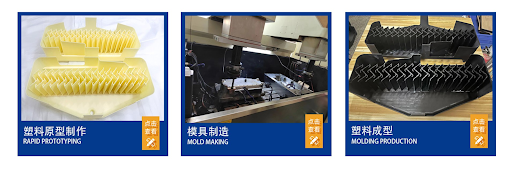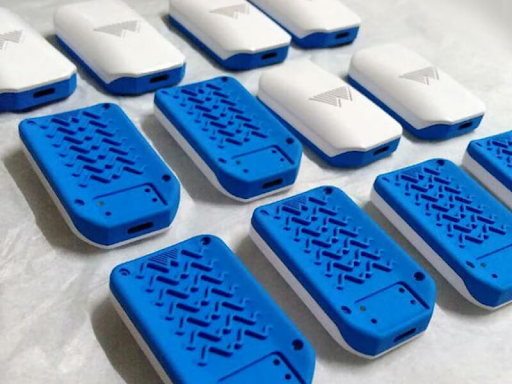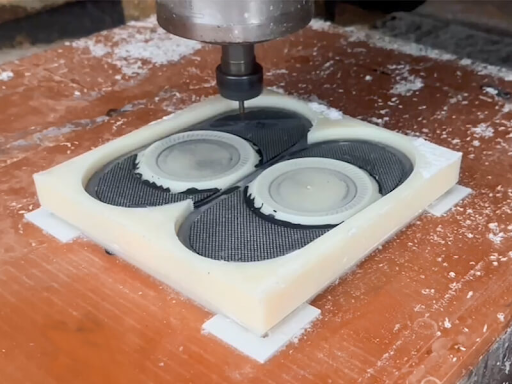Hey, makers and creators! Ready to dive into the exciting world of small batch production? Today, we’re unraveling the mystery of choosing between prototyping injection molding and rapid prototyping.
Prototyping Injection Molding vs. Rapid Prototyping
First things first, let’s get to know them. Prototyping injection molding the tried-and-true method that involves injecting molten plastic into a meticulously crafted mold to create your prototype. Rapid prototyping – the swift and versatile technique that builds up layers to bring your design to life.

Comparing Advantages and Disadvantages
Advantages of Prototyping Injection Molding:
- Precision Personified: Injection molding is the maestro of precision. If your small batch demands tight tolerances and consistency across every piece, this is where injection molding shines.
- Speedy Repetition: Once the mold is set up, injection molding can churn out parts at lightning speed. Perfect for small batch production where time is of the essence.
- Material Variety: Choose from a buffet of materials to suit your prototype’s needs – from basic thermoplastics to high-performance polymers.
Disadvantages:
Initial Setup Investment: Setting up the molds can be a bit of an upfront investment. However, the economies of scale kick in when producing larger quantities.
Advantages of Rapid Prototyping:
- Speed to Prototype: As the name suggests, rapid prototyping lives up to its reputation. It’s quick, allowing you to iterate on your designs swiftly.
- Complex Geometry Friendly: Intricate designs with complex geometries? Rapid prototyping is your go-to. It can handle shapes that might make injection molding break a sweat.
- Cost-Effective for Low Quantities: If you’re testing the waters with a small batch, rapid prototyping might offer a more cost-effective solution.
Disadvantages:
- Material Limitations: While improving, the range of materials available for rapid prototyping might not match the diversity offered by injection molding.
- Less Economical for Larger Batches: As quantities increase, the cost-effectiveness of rapid prototyping diminishes in comparison to injection molding.
When to Opt for Prototyping Injection Molding?
Now, the million-dollar question: when does prototyping injection molding steal the show in the realm of small batch production?
Precision Matters: If your small batch demands precision and consistency that borders on perfection, injection molding is your precision-hungry ally.
Time is of the Essence: Got a tight deadline for your small batch? Injection molding’s rapid cycle times ensure your prototypes are ready for testing or market launch in record time.
Material Variety is Non-Negotiable: When the material is a critical factor for your small batch – be it for strength, flexibility, or other specific properties – injection molding provides an extensive menu to choose from.
Economies of Scale: If there’s potential for future scaling, injection molding becomes increasingly attractive. The initial setup costs are spread across a larger production quantity, making each unit more cost-effective.
Counting the Costs: Prototyping Injection Molding vs. Rapid Prototyping
Now, let’s talk numbers. The budget is a crucial factor when it comes to small batch production, and the cost comparison between prototyping injection molding and rapid prototyping is a key consideration.
Prototyping Injection Molding: The Investment
The Good:
Economies of Scale: The more you produce, the lower the per-unit cost becomes. Injection molding thrives on quantity, making it cost-effective for larger small batches.
Long-Term Savings: While the initial setup may feel like a dent in the budget, the long-term savings become evident as the production scale increases.
The Challenge:
Upfront Costs: Setting up the molds requires an initial investment. However, as the quantity produced increases, the per-unit cost decreases, making it a strategic choice for those planning larger small batches.
Rapid Prototyping: The Agile Choice
The Good:
Cost-Effective for Low Quantities: If your small batch is truly small(several or dozens), rapid prototyping can be a budget-friendly solution. The lack of mold setup costs makes it ideal for testing the waters.
Low Initial Investment: Rapid prototyping shines when you’re exploring designs in smaller quantities, offering a more accessible entry point for those with budget constraints.
The Challenge:
Scaling Up Costs: As the quantity increases, the cost-effectiveness of rapid prototyping diminishes. It becomes less budget-friendly compared to injection molding for larger small batches.
In Conclusion: Small Batch Production, Big Decisions
Choosing between prototyping injection molding and rapid prototyping for small batch production boils down to your specific needs, priorities, and budget.
If precision, rapid production, and a wide material selection are your top priorities, prototyping injection molding takes the lead. It’s the powerhouse for larger small batches with an eye on the future.
On the other hand, if you’re dipping your toes into the small batch waters, testing designs, and prioritizing quick iterations over quantity, rapid prototyping offers an agile and cost-effective solution.
Remember, there’s no one-size-fits-all answer. Evaluate your project’s unique requirements, weigh the pros and cons, and choose the champion that aligns with your small batch production goals.
Advanced Considerations in Small Batch Production
As we delve deeper into the realm of small batch production, let’s consider some advanced aspects that can further influence your decision-making process.
Customization and Complexity: Small batches often come with unique design requirements. If your project involves intricate designs, complex geometries, or customization, rapid prototyping may offer a more flexible approach. It allows for quick adjustments and fine-tuning without the need for significant tooling changes.
Market Testing and Iteration: For small batches intended for market testing or iterative design phases, the rapid turnaround of prototypes through rapid prototyping can be a game-changer. It allows you to gather feedback, make modifications, and swiftly iterate until you hit the sweet spot.
Material Innovation: Consider the material landscape of your project. If you’re working with cutting-edge materials or need specific material properties, injection molding’s extensive material options may be a decisive factor.
Post-Processing and Finishing: Small batches often demand a polished finish. Rapid prototyping technologies might require additional post-processing steps to achieve the desired surface quality. Injection molding, with its inherent smooth finish, may save time and effort in achieving the final look.
Environmental Considerations: In an era where sustainability matters, weigh the environmental impact of your chosen production method. Injection molding, with its efficiency and potential for recyclability, might align better with eco-conscious practices.
Future-Proofing Your Decision: Looking Ahead
Small batch production isn’t just about the present; it’s about future-proofing your designs and decisions. Consider the scalability of your project. If there’s potential for growth and larger production runs down the line, injection molding positions you for a smooth transition.
As we wrap up this comprehensive exploration of small batch production through prototyping injection molding and rapid prototyping, remember that informed decisions are the cornerstone of success.
Evaluate your project’s unique requirements, weigh the advantages and disadvantages, consider your budget constraints, and envision the trajectory of your small batch – both in the short term and the long run.
Whether you opt for the precision of injection molding or the agility of rapid prototyping, each method brings its strengths to the table. Small batch production is a canvas waiting for your creative strokes, and your choice of prototyping method is the brush that shapes your masterpiece.
And there you have it – a guide to navigating the choices between prototyping injection molding and rapid prototyping for small batch production. Until next time, may your prototypes be flawless and your production decisions be spot-on!

